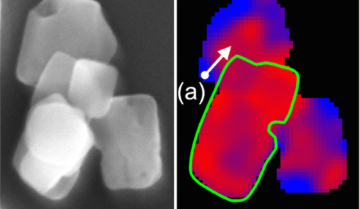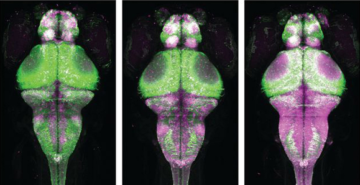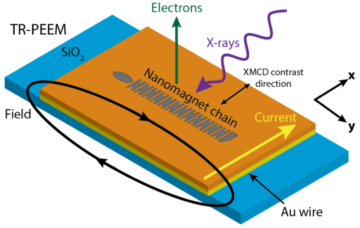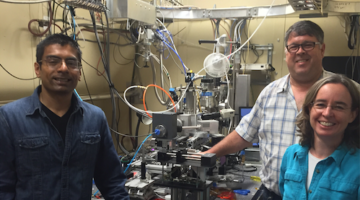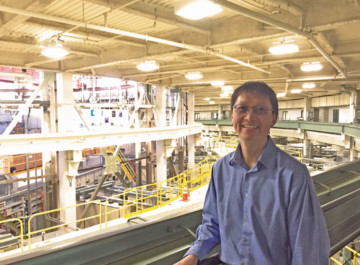Recent findings at the ALS show that small crystal size is key to maintaining a battery’s performance and establish soft x-ray ptychography as an essential tool for studying chemical states in nanoparticles.
Read more »![]()
![]()
All News & Updates
Ashley White, Director of Communications
After many years as a researcher followed by a few in government and policy, Ashley White sees her new position as ALS Director of Communications as a perfect blend of it all. “I’m thrilled to be back in a research environment, since I started out my career as a researcher and loved being in the lab,” she says. “When I walk around the ALS and see all the tin foil and the beamline equipment, it feels like home.” Read more »
A Designed Protein Maps Brain Activity
A team of scientists designed and validated via x-ray crystallographic studies a fluorescent protein (CaMPARI) that allows the permanent marking of active brain cells. The protein was then used to study live changes via fluorescence in the active nerve cells in brains of fruit flies, zebrafish, and mice. Read more »![]()
![]()
Reporting Publications Just Got Easier!
The LBNL publication reporting system allows you to report your journal articles with just a DOI or PubMed number. We invite you to test the system and provide your feedback. Read more »
Misfolded opsin mutants display elevated β-sheet structure
Mutations in rhodopsin can cause misfolding and aggregation of the receptor, which leads to retinitis pigmentosa, a progressive retinal degenerative disease. Förster resonance energy transfer (FRET) and Fourier transform infrared (FTIR) microspectroscopy were utilized to probe within cells the structures formed by G188R and P23H opsins. Read more »
Signal Speed in Nanomagnetic Logic Chains
A time-resolved x-ray imaging technique directly observes signal propagation dynamics in nanomagnetic logic (NML) chains. The technique can assess NML reliability on fast time scales and help optimize chain engineering for this promising ultralow-power computing architecture. Read more »![]()
![]()
Wolfgang Eberhardt on Light Sources: Getting the Balance Right
Wolfgang Eberhardt, an internationally respected expert on synchrotrons, is wrapping up an extended visit to the ALS. Between experiments furthering our understanding of organic solar-cell materials, he discusses the relative merits of diffraction-limited storage rings (such as the proposed ALS upgrade, ALS-U) and free-electron laser facilites. Read more »
User Experiment Safety Process Update: For Experiments After August 17
The ALS has updated its User Experiment Safety Process. The main change that will affect users is a new requirement to complete an Experiment Safety Sheet (ESS) for each visit and for each beamline. This is a change from current procedure where an ESS can be valid for up to one year and may cover more than one beamline. Read more »
Footprinting Technique Gives ALS Users New Insights
The x-ray footprinting (XFP) technique developed at ALS Beamline 5.3.1 gives researchers a powerful tool for the study of macromolecular structures and dynamics of proteins and nucleic acids in solution. Read more »
Ken Chow, ALS Engineering Lead
In his new role as ALS Engineering Lead, Ken Chow has taken on a consolidated role that was previously split between mechanical and electrical. As of August, a reorganization of ALS engineering has Chow overseeing all engineering tasks at the ALS, which includes magnetic and vacuum systems, mechanical engineering and technology, and electrical and controls engineering. Read more »
- « Previous Page
- 1
- …
- 123
- 124
- 125
- 126
- 127
- …
- 139
- Next Page »
